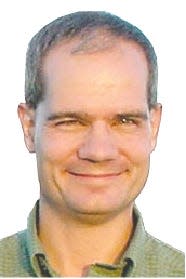The book that saved the world: Silent Spring turns 60
- Oops!Something went wrong.Please try again later.
Sixty years ago, a talented biologist and writer working in Silver Spring, Md., published a book that changed the world for the better
Rachel Carson was an unlikely revolutionary. For 16 years, from 1936-1952, Carson had worked as a government biologist, writer and editor for the Bureau of Fisheries and later the U.S. Fish and Wildlife Service. During that time, she established herself as an eloquent naturalist, newspaper columnist and eventually best-selling author of gentle books describing the world of oceans. There was little in her résumé to suggest she would usher in the modern environmental movement.
But then came DDT.
DDT was the miracle insecticide that helped win World War II by preventing a variety of casualties from insect-borne diseases — its discoverer won the 1948 Nobel Prize in medicine.
Carson was tasked in 1945 with writing a press release noting new experiments suggesting DDT was “toxic” and could have “dangerous effects” on animals.
As research on DDT continued at nearby Patuxent Research Refuge in Laurel, Md., it became clear that DDT in sufficient quantities not only killed insects, but, through bioaccumulation up the food chain, could also kill fish and birds.
Now Carson had a tortured personal decision to make. From 1941 to 1955 she had written three bestselling marine biology books: Under the Sea-Wind, The Sea Around Us, and The Edge of the Sea. Carson could continue to write the sea books that made her famous and that her readers expected, or she could choose to tackle the most controversial and complex book of her career.
To Carson’s credit she chose the latter, harder pathway.
Seventeen years after first learning of DDT, Carson published a stinging indictment of the insecticide and its impact. Deriding DDT as a “biocide,” Carson noted the continued use of this class of insecticides would decimate our fish and bird populations — leading to an apocalyptic nature in which no birds sing, and humans encounter a “silent spring.”
Silent Spring created a whirlwind of controversy with its publication in 1962, as it was quickly attacked by the agrichemical industry and its many adherents. Carson met her vociferous critics with sober science and was proven right.
DDT was banned in the U.S. in 1972. Sadly, Carson did not live to see her vindication or her legacy, as she died of breast cancer in 1964.
Sixty years after this book, Carson’s legacy lives on. Silent Spring was the spur for the Environmental Protection Agency (1970), the Clean Water Act (1972), and the Endangered Species Act (1973).
Carson’s book spurred the modern environmental movement with its emphasis on toxins, endangered species, and the human impact on nature. We all live in a cleaner, healthier and more diverse environment thanks to this conservation crusader.
It is rare for a book to cause a revolution in thought and action. One thinks of Thoreau’s Civil Disobedience (1849) or Stowe’s Uncle Tom’s Cabin (1852) changing our country. Carson’s Silent Spring belongs on that shelf of books that changed our world for the better.

Mark Madison is also a newspaper columnist and U.S. Fish and Wildlife Service employee like Carson — but claims to be significantly less eloquent and famous.
This article originally appeared on The Herald-Mail: 60 years ago, Rachel Carson's 'Silent Spring' shocked us into change
